Have you ever stepped into a room and instantly felt calm and relaxed? Or maybe you’ve entered a space that filled you with energy and excitement? That feeling isn’t a coincidence — The secret lies in the power of colours. In this blog we will understand psychology of colours in interior design.
Colours have an extraordinary ability to captivate our senses For example, a soft beige in a living room can make the space feel warm, calm and cozy — like you instantly want to sit down and relax. On the other hand, a bright yellow can make the room feel happy, lively and full of energy almost like the colour itself is cheering you on.
Every colour has its own personality. Blue can make you feel calm and safe. Green can feel fresh and balanced. Red can feel bold and energetic. These little messages from colours quietly shape how we feel in our homes every single day often without us even noticing.
When you understand this, you can choose colours that make your home feel exactly how you want — calm, happy, cozy or full of energy. That’s the magic of colour psychology in home interior design. it’s not just about how a room looks, but how it feels.
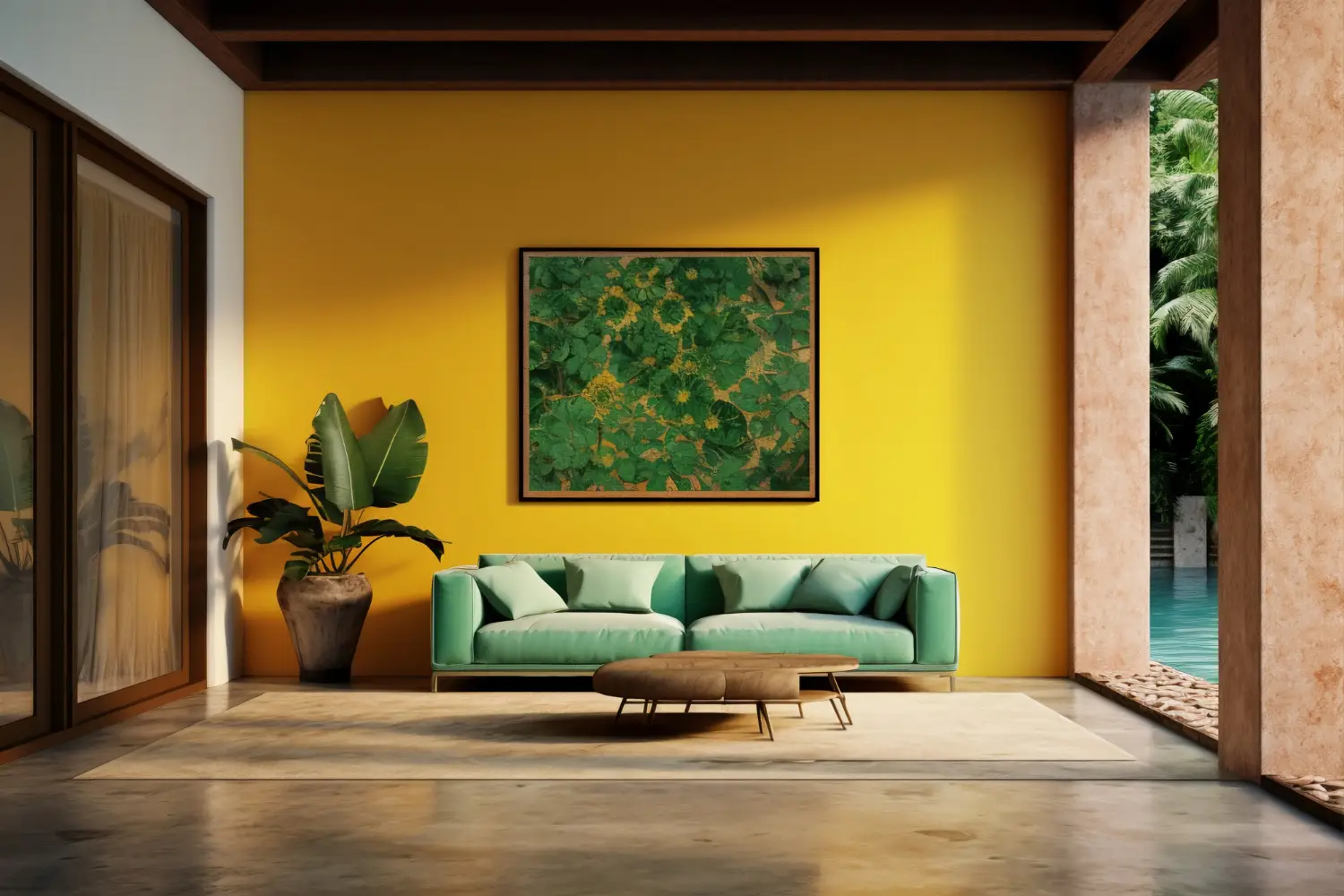
Colours can make you feel certain ways. Warm colours like red, orange or yellow can make a space feel lively and full of energy. Cool colours like blue or green can make a room feel calm and relaxing. By choosing colours carefully for each room, you can create the exact mood you want.
Colours do more than make a room look nice. They can change how you feel. Bright, cheerful colours can bring joy and positivity, while soft & gentle colours can make you feel calm and relaxed.
For example — A bright kitchen can help you start your day with energy, While a soft blue bedroom can help you rest and relax at night.
The colours you choose in your home can reflect your personality. Some shades make a space feel lively and energetic, While others create a calm and peaceful vibe. By understanding how colours influence feelings, you can select shades that match your style and make your home feel like a true reflection of you
Colours can change how a room feels. Light shades make a room feel bigger and more open. Darker shades make it feel cozy and close. By picking the right shades, you can make a room feel just the way you want.
Green is strongly linked to nature, growth and the outdoors. It naturally brings a sense of balance, calm and harmony into any home. Being around green shades can help reduce stress, refresh your mind and create a peaceful atmosphere. That’s why a room with green walls and furniture often feels relaxing and uplifting.
Soft, gentle greens can make a space feel relaxing, While deeper, earthy greens can add a sense of elegance and sophistication. You don’t have to use green only on walls — it can be added through furniture, cushions, rugs or other decor items. Adding plants or small green accents can also bring a touch of nature inside & making your home feel fresh and lively.
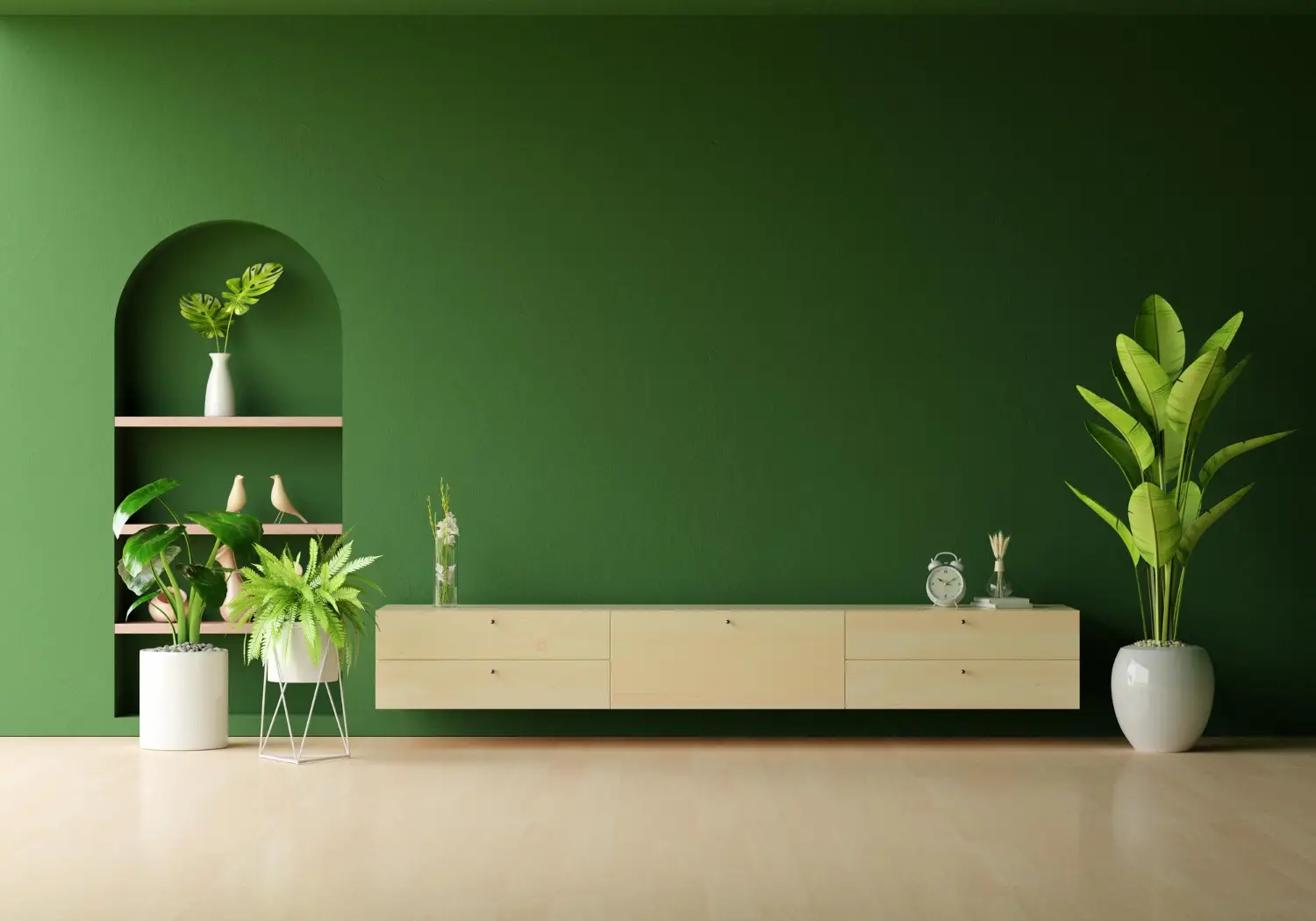
Blue represents calm, peace and tranquility making it an excellent choice for creating relaxing and soothing spaces in your home. It instantly brings a sense of serenity and can help balance the energy of a room. Blue is often associated with the open sky and the gentle movement of the ocean which naturally gives a feeling of harmony, stability and comfort. Being surrounded by blue shades can reduce stress and promote a sense of mental clarity making it easier to unwind after a long day or enjoy quiet moments of reflection.
Using blue in a room can create a refreshing and calming atmosphere that supports relaxation and well-being. Lighter or pastel blues make spaces feel airy, open and welcoming. They are especially helpful in smaller rooms or bedrooms with little natural light as they reflect light and make the area appear larger and brighter. These shades can also create a peaceful backdrop that allows other décor elements such as furniture or artwork to stand out.
Darker blues such as deep navy or rich royal tones add a sense of depth and sophistication to a room. They are perfect for creating a more elegant and refined ambiance in living rooms, dining areas or study spaces. Pairing darker blues with lighter neutral tones can help balance the intensity and prevent the room from feeling too heavy while adding textures through furniture, cushions or rugs can further enhance the warmth and comfort of the space.
Overall, incorporating blue into your home allows you to design spaces that are not only visually appealing but also emotionally calming. Whether used on walls, furniture or accessories. Blue creates a timeless and soothing environment that supports relaxation, focus and overall well-being.
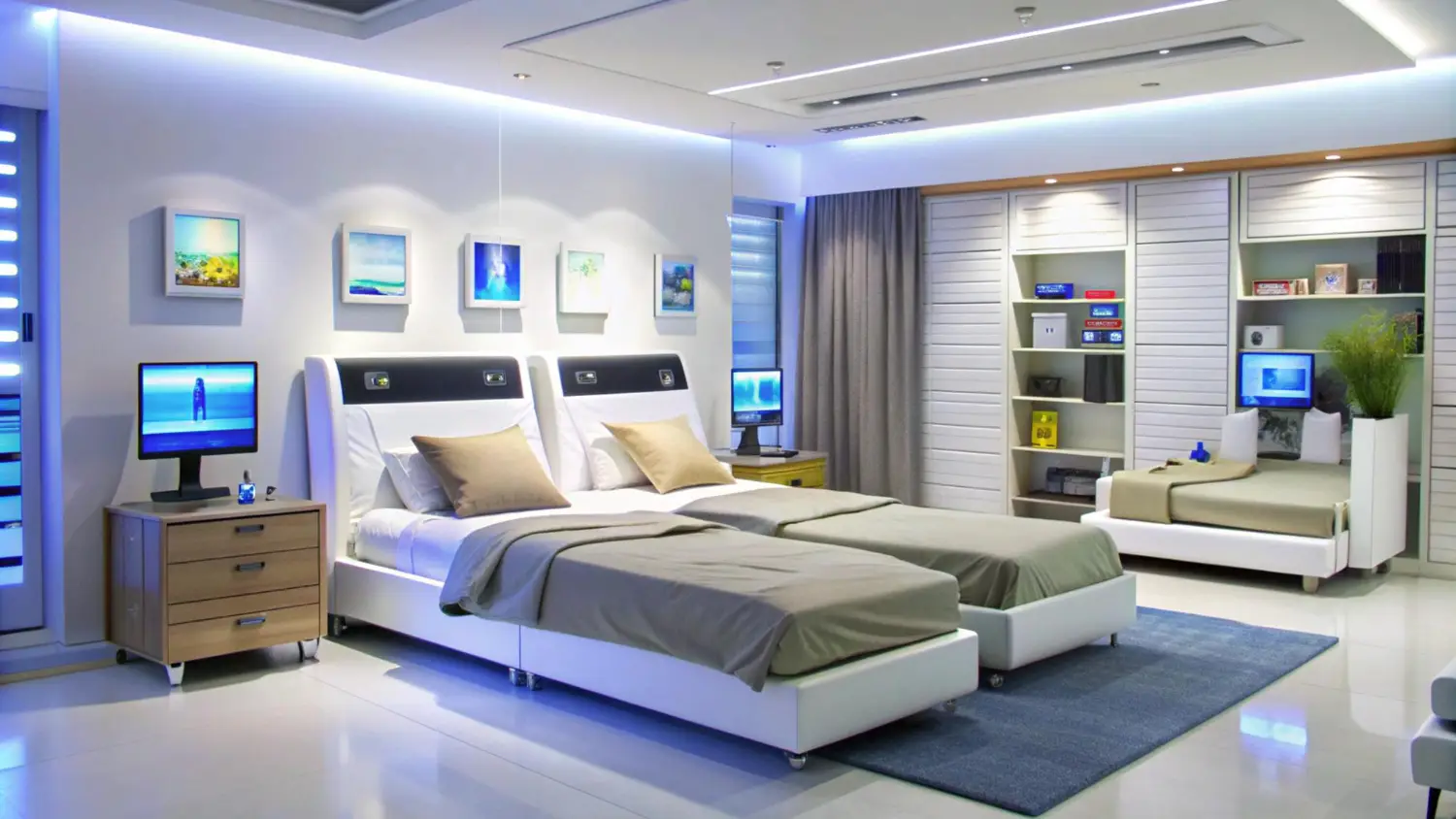
Imagine walking into a room that instantly grabs your attention and fills the space with energy and warmth. That’s the effect of red in interior design. Red is bold, lively and full of passion. It is a colour that naturally draws the eye and evokes strong feelings.
One of the best ways to use red is through accent walls. Painting a single wall in a vibrant red shade immediately creates a focal point and adds character to the room. Red looks even more striking when combined with neutral tones or contrasting shades, giving the space balance while still keeping its energy.
Red can also be introduced through furniture, decor or accessories for a subtler approach. A red sofa, cushions or artwork can bring life to a space without overwhelming it. Using red strategically helps to energize rooms such as the living area, dining room or even a home office where motivation and interaction are important.
Overall, incorporating red in your home interior can bring warmth, vitality and excitement.
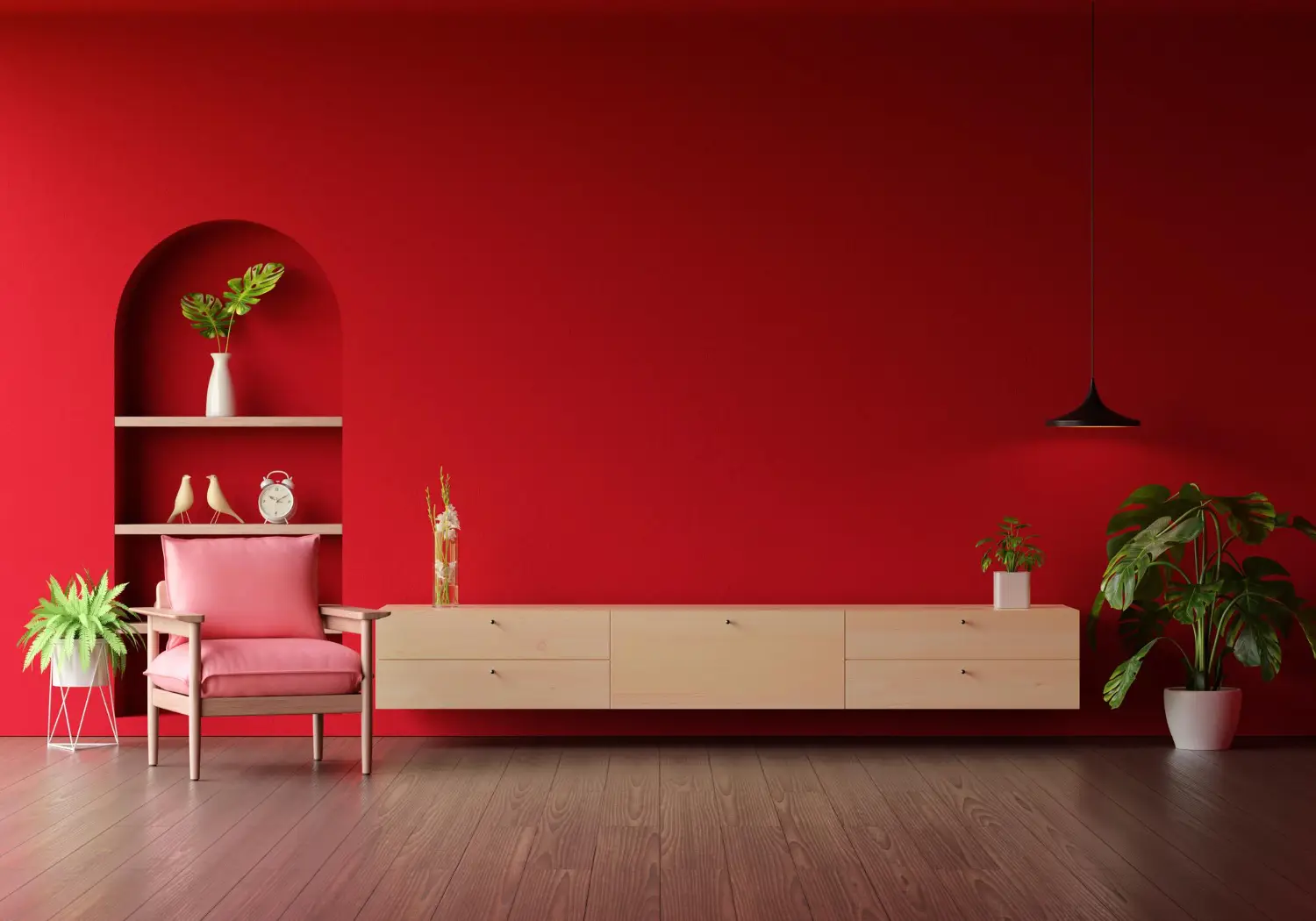
Adding yellow to your home is a great way to bring warmth and happiness into your space. Yellow has a bright and sunny feel that can make any room look cheerful and inviting. It is linked with joy, creativity and positive energy. You can use yellow in furnitures also Painting a wall or a whole room in warm yellow can make the space feel brighter and more open.
Softer shades of yellow create a calm and gentle atmosphere that works well in relaxing areas. Yellow pairs nicely with neutral tones for a modern clean look. When combined with cooler shades it can make the room feel fresh and natural.
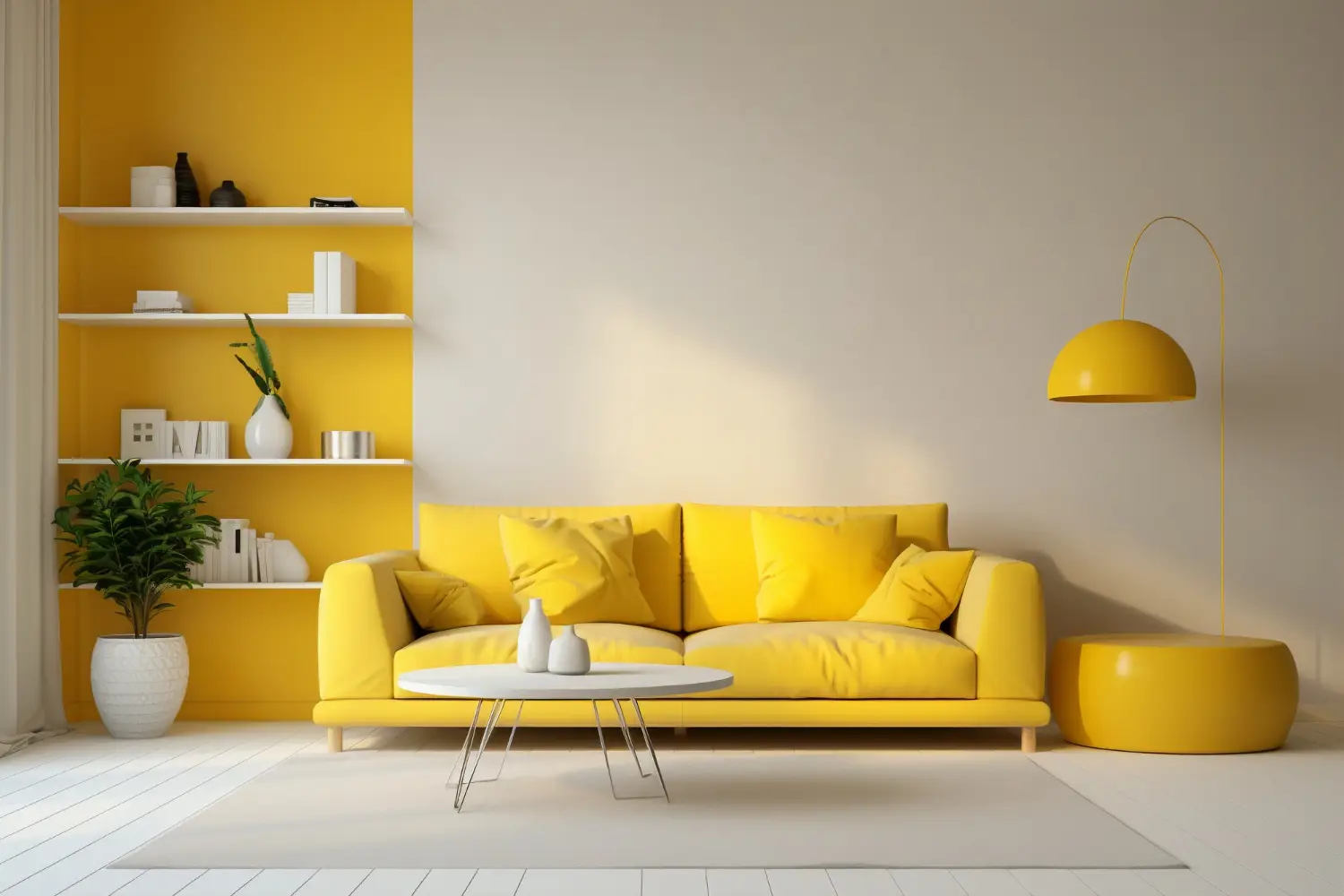
Purple is a colour that brings a sense of luxury, mystery and elegance into a space. Its rich and regal feel can make any room look stylish and sophisticated. Darker shades create drama and opulence and work well for statement walls or focal points. Lighter shades give a soft and romantic atmosphere that is perfect for bedrooms or guest rooms.
You can add purple through furniture, decor or accessories to give a room a luxurious touch. Pairing it with metallic accents like gold or silver makes the space feel even more glamorous. Using purple thoughtfully allows you to create a home that feels elegant, unique and full of character.
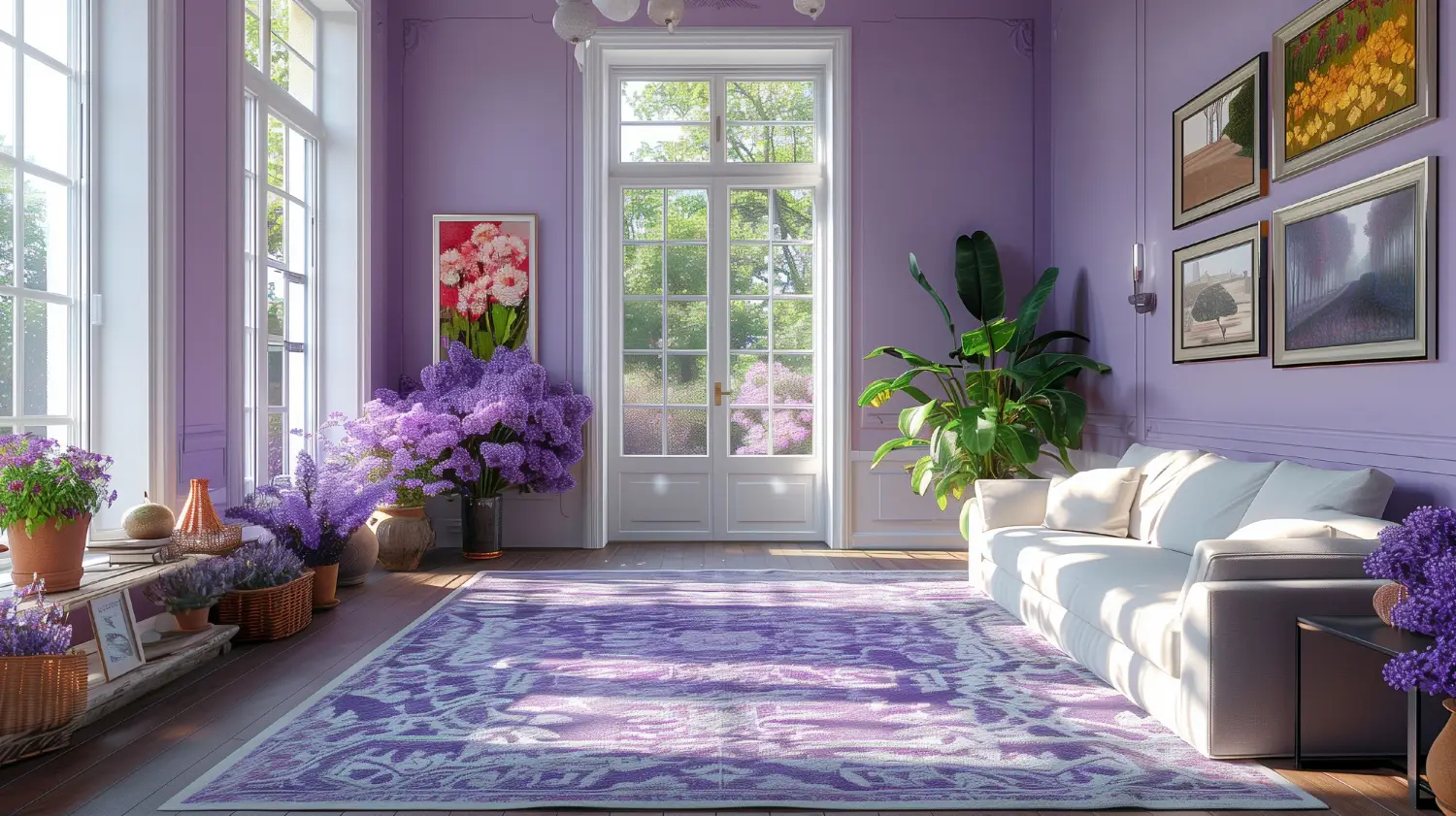
White is a colour that feels endless like a blank canvas waiting for your creativity. It brings a sense of purity simplicity and calm to any space. One of the best things about white is how it can make a room feel bigger and brighter which is perfect for smaller spaces or rooms with little sunlight.
Its simplicity encourages a clean and clutter-free environment. White walls give your furniture decor or artwork a chance to stand out and show your personal style. You can mix in textures like soft rugs rattan furniture or smooth surfaces to add warmth and interest. Using white thoughtfully helps create a home that feels open peaceful and truly reflects your personality.
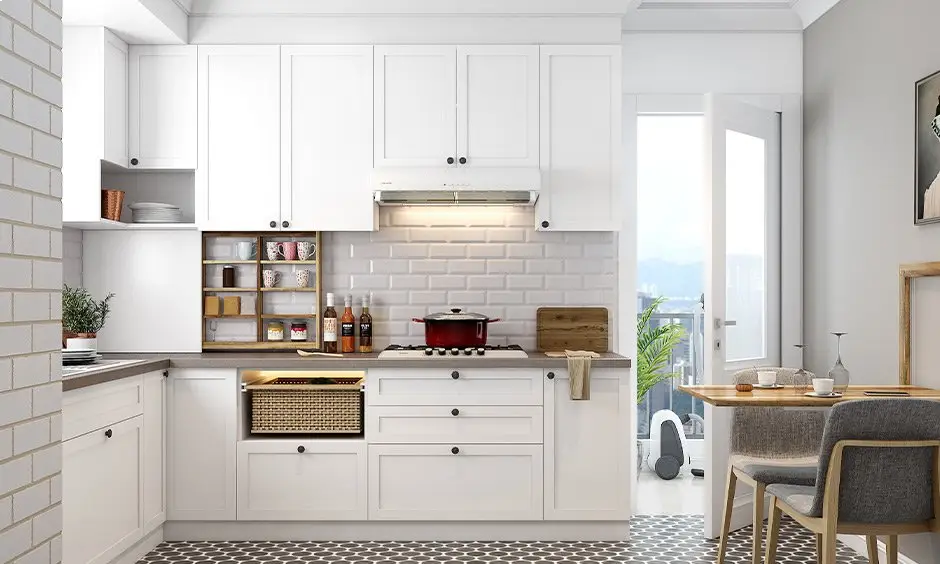
Black is a colour that brings mystery and drama into a space while giving it a timeless and elegant feel. It makes a strong statement and can be used in many ways from a tiled wall in the bathroom to a wardrobe or a textured accent wall. Black adds depth and contrast and works well with almost any style whether modern minimalist or traditional.
Using black in your home adds a touch of drama and interest. It creates a play of light and dark when combined with lighter shades. A black-and-white scheme or black paired with metallic accents can make a room feel dynamic and stylish. Black can make smaller spaces feel cozy and intimate or act as a sleek backdrop in larger rooms giving them a modern and sophisticated atmosphere.
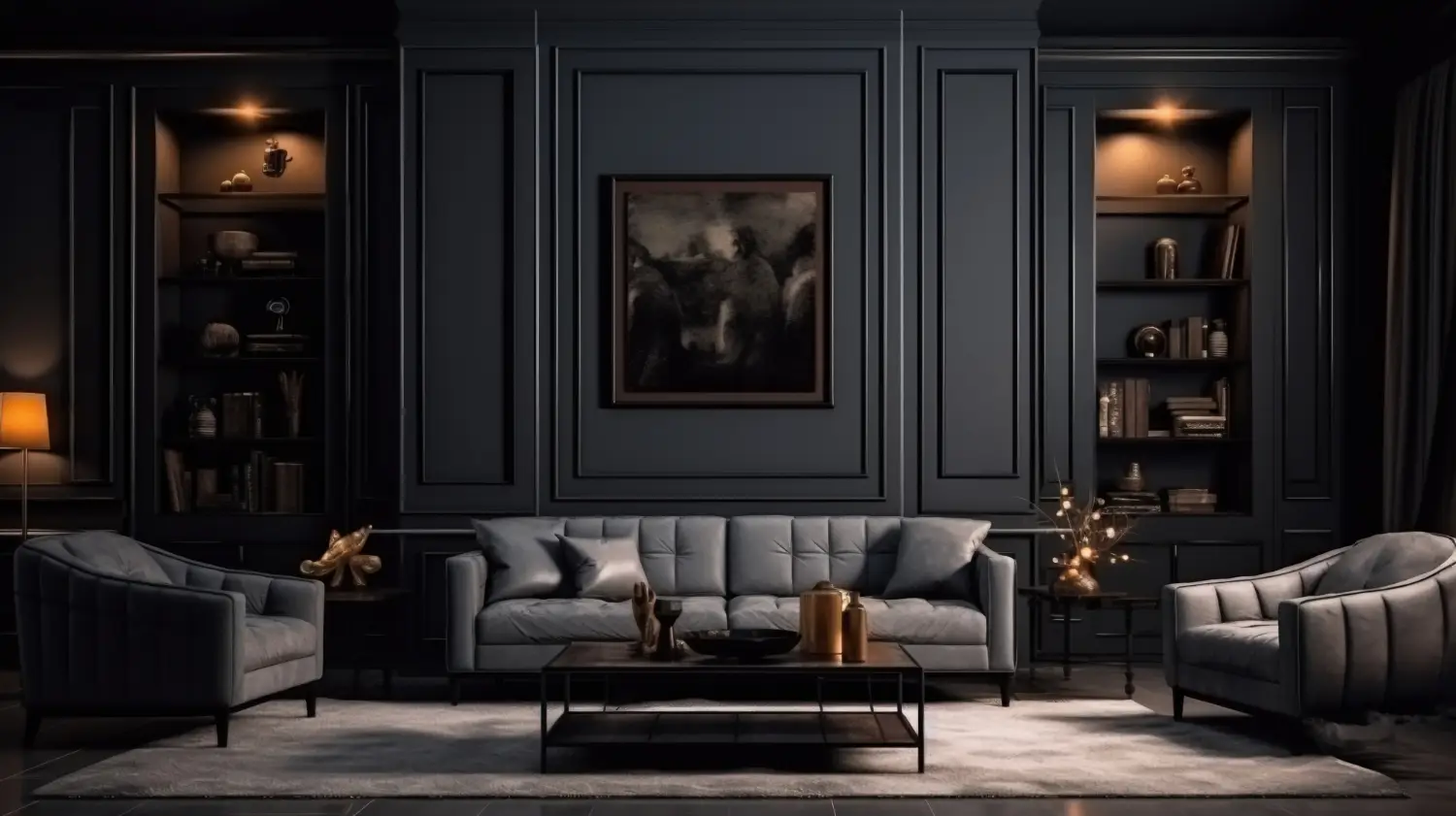
Brown is a colour that brings warmth and comfort into a home and creates inviting spaces. It is a timeless shade that adds a natural and earthy feel to interiors. Brown represents stability and a connection to nature and often makes a room feel cozy and relaxing like the comforting warmth of a cup of cocoa. This makes it a great choice for living rooms or spaces where you want a calm and peaceful atmosphere.
Brown is also very versatile in interior design. It can appear in rich wood furniture or a warm accent wall. Cabinets in soft sandy tones or a deep brown leather sofa can create different moods in a room. Lighter shades of brown work well with beach-inspired or Scandinavian-style interiors while deeper tones fit traditional or rustic themes. Using brown thoughtfully helps make a home feel grounded comfortable and welcoming.
We hope you enjoyed exploring the fascinating world of colour psychology in interior design. Understanding how colours affect mood and emotions can help you create a home that feels balanced, inviting and truly reflects your style. As you plan your interior design journey, don’t be afraid to try new shades and combinations that inspire you. And if you ever need guidance along the way our designers are here to help you bring your vision to life.
Colours influence how we feel and experience our homes. Warm shades bring energy and happiness while cool tones create calm and relaxation. Each colour has its own effect—green feels balanced and fresh, blue is peaceful, red adds passion and energy, yellow brings cheer, purple feels luxurious, white opens up space, black adds drama and brown gives warmth and comfort.
Understanding colour psychology helps you choose shades for walls, furniture and decor that match your mood, personality and style. Using colour thoughtfully can make your home feel inviting, balanced and full of character.
Colour psychology is the study of how different colours affect a person’s mood, creativity, energy and focus. Calm colours like blue and green can make you feel relaxed, while bright and bold colours like red, orange or maroon can make you feel more energetic and passionate. Neutral shades like white and gray often create a sense of peace and calm. This field is based on how colours influence the human brain. While certain colours generally create specific feelings, each person may respond differently to the same colour depending on their experiences and preferences.
To choose the best colour for your home in Dubai think about how you want each room to feel. Bedrooms should be calm and relaxing while living rooms and kitchens can feel bright and energetic. Light colours make rooms feel bigger and cooler and work well with Dubai’s sunlight. Darker colours can be used for small areas like an accent wall or furniture to add interest. Start with neutral shades for walls and big pieces then add colours through decor and accessories. Pick colours that match your style and make you feel comfortable and at home. It is always a good idea to try a small sample first to see how it looks in your space.

Parm Decor was founded by a team of passionate professionals with years of experience in the UAE market. Over the years, Parm has built a solid reputation as a trusted provider of high-quality interior solutions, combining craftsmanship, innovation, and personalized service.